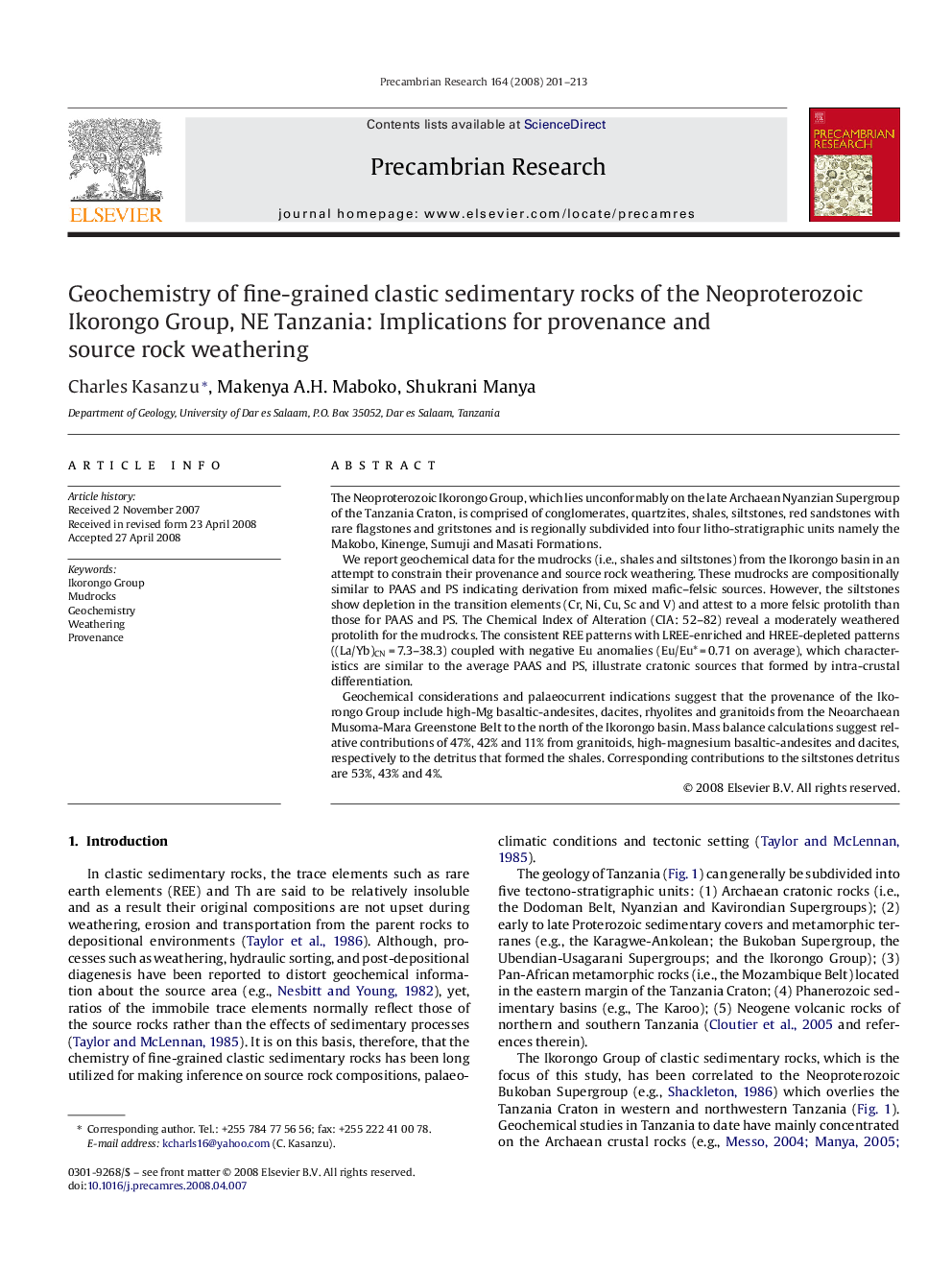| Article ID | Journal | Published Year | Pages | File Type |
|---|---|---|---|---|
| 4724336 | Precambrian Research | 2008 | 13 Pages |
The Neoproterozoic Ikorongo Group, which lies unconformably on the late Archaean Nyanzian Supergroup of the Tanzania Craton, is comprised of conglomerates, quartzites, shales, siltstones, red sandstones with rare flagstones and gritstones and is regionally subdivided into four litho-stratigraphic units namely the Makobo, Kinenge, Sumuji and Masati Formations.We report geochemical data for the mudrocks (i.e., shales and siltstones) from the Ikorongo basin in an attempt to constrain their provenance and source rock weathering. These mudrocks are compositionally similar to PAAS and PS indicating derivation from mixed mafic–felsic sources. However, the siltstones show depletion in the transition elements (Cr, Ni, Cu, Sc and V) and attest to a more felsic protolith than those for PAAS and PS. The Chemical Index of Alteration (CIA: 52–82) reveal a moderately weathered protolith for the mudrocks. The consistent REE patterns with LREE-enriched and HREE-depleted patterns ((La/Yb)CN = 7.3–38.3) coupled with negative Eu anomalies (Eu/Eu* = 0.71 on average), which characteristics are similar to the average PAAS and PS, illustrate cratonic sources that formed by intra-crustal differentiation.Geochemical considerations and palaeocurrent indications suggest that the provenance of the Ikorongo Group include high-Mg basaltic-andesites, dacites, rhyolites and granitoids from the Neoarchaean Musoma-Mara Greenstone Belt to the north of the Ikorongo basin. Mass balance calculations suggest relative contributions of 47%, 42% and 11% from granitoids, high-magnesium basaltic-andesites and dacites, respectively to the detritus that formed the shales. Corresponding contributions to the siltstones detritus are 53%, 43% and 4%.
